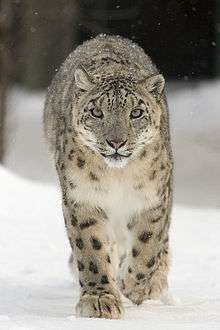Sacred Himalayan Landscape

The Sacred Himalayan Landscape (SHL) is a trans-boundary conservation area located mostly in Nepal (73.6%) but also including land in Sikkim and Darjeeling in India (24.4%) and a small area in Bhutan (2.1%). It links the Qomolangma National Nature Preserve in the Tibet, one of the largest protected areas in Asia, with the Kangchenjunga Landscape in India and the Bhutan Biological Conservation Complex in Bhutan. About 22% of the area includes four of Nepal's protected areas: Langtang National Park, Sagarmatha National Park, Makalu Barun National Park, and the Kanchenjunga Conservation Area.[1]
Climate change threatens the flora and fauna of this area. Trans-boundary protection of its biological and ecological connections is critical for the survival of such species as the snow leopard and the red panda that are threatened throughout the world.[2]
Sustainable livelihoods for the people
The area covers nine and a half million acres and includes five million people of diverse cultures who speak 40 languages.[3] Most face abject poverty[1] and are in need of sustainable livelihoods.[3]
SHL is part of the initiation of the World Wildlife Federation (WWF) that "taps into the spiritual beliefs and conservation ethics of local communities to restore essential habitats and protect endangered species such as the snow leopard."[4]
WWF has cooperated with the three governments of Nepal, India and Bhutan to preserve the fragile "complex mosaic of biodiversity" and "achieve conservation while creating sustainable livelihoods in the Sacred Himalayan Landscape".[3] The mountains in the SHL contain the future water supply, in the form of glaciers, for the huge population on the Indian subcontinent but are susceptible to natural disasters such as landslides, forest fires and flash floods that are caused by poor land management.[3]
The Mountain Institute (TMI) has worked with farmers in the SHL by teaching them to cultivate medical plants, having trained over 12,500 since 2001.[5]
References
- 1 2 "Sacred Himalayan Landscape". Government of Nepal - Department of National Parks and Wildlife Conservation. Archived from the original on 12 June 2013. Retrieved 24 February 2013.
- ↑ "Sacred Himalaya Landscape". USAID Environment. Retrieved 23 February 2013.
- 1 2 3 4 "The Sacred Himalayan Landscape" (PDF). worldwildlife.org. Retrieved 23 February 2013.
- ↑ "Eastern Himalayas - Preserving the Sacred Himalayan Landscape". worldwildlife.org/. Retrieved 23 February 2013.
- ↑ Conserving the Sacred Himalayan Landscape